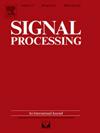DC-Reg: A triple-task collaborative framework for few-shot biomedical image registration
IF 3.4
2区 工程技术
Q2 ENGINEERING, ELECTRICAL & ELECTRONIC
引用次数: 0
Abstract
Deep learning (DL)-based deformable biomedical image registration (DIR) enables automatic information fusion and facilitates rapid diagnosis by aligning multi-source data into a unified coordinate system. However, achieving accurate similarity measurement and obtaining adequate training data pose significant challenges in biomedical image processing tasks. In this paper, we propose a few-shot DIR method that leverages spatial encoding within a triple-task collaborative framework to solve these issues. Firstly, we propose a registration network based on the spatial encoding, which represent images using voxel spatial positions, highlighting the importance of structural information in registration network while reducing modality difference between different images. Secondly, we propose a segmentation network based on data augmentation, which is achieved through the registration network. Specifically, we have designed a contrastive learning based discrimination network to suppress the unreliable augmented training data, which is also our third important component of the collaborative framework. Furthermore, the discrimination network also automatically learns similarity measure for the registration network. By iteratively refining the segmentation, registration, and discrimination networks, we are able to obtain a highly accurate registration model. Our experimental results on four mono-modal and multi-modal datasets demonstrate the effectiveness and superiority of the proposed method.
求助全文
约1分钟内获得全文
求助全文
来源期刊

Signal Processing
工程技术-工程:电子与电气
CiteScore
9.20
自引率
9.10%
发文量
309
审稿时长
41 days
期刊介绍:
Signal Processing incorporates all aspects of the theory and practice of signal processing. It features original research work, tutorial and review articles, and accounts of practical developments. It is intended for a rapid dissemination of knowledge and experience to engineers and scientists working in the research, development or practical application of signal processing.
Subject areas covered by the journal include: Signal Theory; Stochastic Processes; Detection and Estimation; Spectral Analysis; Filtering; Signal Processing Systems; Software Developments; Image Processing; Pattern Recognition; Optical Signal Processing; Digital Signal Processing; Multi-dimensional Signal Processing; Communication Signal Processing; Biomedical Signal Processing; Geophysical and Astrophysical Signal Processing; Earth Resources Signal Processing; Acoustic and Vibration Signal Processing; Data Processing; Remote Sensing; Signal Processing Technology; Radar Signal Processing; Sonar Signal Processing; Industrial Applications; New Applications.
 求助内容:
求助内容: 应助结果提醒方式:
应助结果提醒方式:


